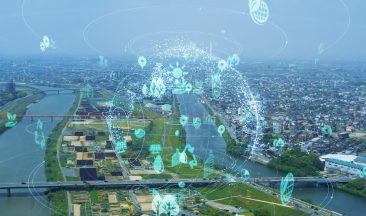Soon, self-driving vehicles will take their place in everyday life and industry.
Imagine a future where motor vehicles are mobile robots that can take us anywhere with a few keystrokes or taps on your smartphone!
The demand for e-mobility applications and vehicle autonomy and the need to remain relevant in the industry 4.0 ecosystem, has nudged automotive companies to clear some near-term hurdles and adopt an integrated organizational approach toward technology and innovation.
Industry 4.0 automotive applications are defined by connectedness: In the Industry 4.0-ready facility, devices connect to each other as well as to human interfaces, providing real-time data from myriad sensors. And humans can “connect” to that data at any time. Paired with advanced analytics and machine learning, this ecosystem of sensors, devices, and humans is incredibly powerful and has enabled the rapid development of autonomous vehicles.
Autonomous Trucking Overtaking Self-Driving Car Development
Most of the hype around e-mobility applications, industry 4.0 automotive applications and autonomous vehicles has been in the passenger vehicle market but a new category of vehicles is overtaking self-driving cars in that leap into the future.
Autonomous trucks have been quietly making more progress toward commercial deployment, and their impact on the transportation of goods will no doubt be profound.
Industry 4.0
Enterprise integration of 4.0 applications is of utmost importance especially in the framework of the emergent technologies of the Internet of Things (IoT), big data, and Artificial Intelligence (AI). Enterprise Integration and Interoperability can ensure efficient communication among diverse services driven by big data.
Enterprise Integration of 4.0 relies on a combination of the Internet of Things (IoT), smart sensors, HD cameras, and Artificial Intelligence (AI) working in tandem have taken Autonomous Vehicles (AV’s ) from the drawing board into the present.
The goal of Industry 4.0 is to make manufacturing go beyond automation and optimization by integrating production processes with digital technologies and big data creating a smart connected ecosystem.
ICL and Industry 4.0
ICL has incorporated Industry 4.0 into its daily operations to improve manufacturing and distribution operations with increased efficiency, productivity, safety, and faster time to market using technology like drones, VR, AR, and machine learning.
Automation of the Supply Chain Logistics
As demand grows for faster product shipments, Autonomous Trucks (Ats) will aid businesses in getting items to their customers efficiently and economically.
European technology platform ManuFuture is developing a vision for 2030, where production logistics is integrated through self-driving mobile platforms both indoors and outdoors by artificial intelligence.
Given the size of the opportunity, many shippers and fleets are asking, “When will autonomous trucking be available?” The more important question to ask is, “Where might autonomous trucking be available first, and how would it proliferate?”
Enterprise integration of 4.0 applications with automated equipment might ultimately lead to a truly 24/7 supply chain. In such a supply chain, trucks can unload while others load and still others head out in platoon with one driver in control of a row of fully automated trucks behind him, all from the same distribution center at the same time, no matter what time it might be.
You may be interested in:
One step ahead: artificial intelligence at ICL
Autonomous Vehicles 101 –
How These Star Wars Innovations Really Work
Driverless or autonomous vehicles operate using a wide range of sensors, including Lidar (Light Detection and Ranging using a pulsed laser), HD video cameras, Traditional Radar, Ultrasonic Sensors, and various Motion Sensors, such as Accelerometers.
This data is fed into a computer on the truck, which then creates a three-dimensional map of the truck’s environment and the objects around it. The computer then uses all that information and GPS data to make decisions about where and how to drive, using algorithms to predict the consequences of its own and other vehicles’ behavior. This data produces a virtual image of the truck’s surroundings which vaguely resembles a 3D ultrasound.
US Trucking Industry
The US trucking industry is worth a whopping $791 billion annually and is widely expected to be an early adopter of self-driving technology, with numerous tech companies and major truck makers racing to build autonomous trucks.
Nearly everything in an average American home has been on a truck at some point, including furniture, electronics, food, clothing, and toiletries, and represents around 70% of all goods movement.
ICL Innovation
At ICL we are continuously exploring safer and more environmentally friendly approaches to everyday challenges. With this in mind, ICL was one of the innovators in the deployment of driverless trucks in our production and warehousing facilities.
ICL at the Forefront of Autonomous Truck Use
ICL’s Ladenburg site in Germany has been using Autonomous Trucks since 2011. These cutting-edge vehicles transport materials without any human intervention.
The site handles phosphoric acid from ICL’s plants in Israel for further processing. Before the introduction of Autonomous Vehicles, all internal transport of products was done by driver-operated trucks and forklifts.
One of the disadvantages of forklifts is that goods transported in the open air are exposed to the weather, bird droppings, and microbiological contamination, which can adversely affect product quality.
These driverless trucks made by Mercedes Benz and other tech partners achieved payback in only 18 months.
Levels of Autonomy
Not all Industry 4.0 autonomous vehicles have the same level of autonomy. To better categorize these differences a system of five levels of autonomy has been developed by the Society of Automotive Engineers.
On a scale of zero to five, Level 0 means that no functions of the vehicle are automated, while Level 5 means the vehicle can operate without human intervention—or without a human even in them—in all driving conditions.
At present, most of the systems that are immediately aimed at Level 4 or 5 driving, rely on relatively similar combinations of technology.
Advantages of Autonomous Trucks
One of the many advantages of autonomous trucks is a reduction in fuel consumption and decreased emissions due to smoother, more efficient driving and the use of convoys.
The real gain is achieved if trucks and cars can indeed be driver-free and drivers deployed for other functions in the logistics supply chain.
The Future is Already Here
The development of e-mobility applications and autonomous Trucks is accelerating and taking us into the future at a rapid pace. Autonomous trucks are bringing the future into the present and will change our highways and byways in a way we never could imagine.
They hold the promise of 24/7 logistics from factory to consumer with increased efficiency, cost-effectiveness, and overall savings for everyone along the logistics supply chain.
ICL is at the forefront of Industry 4.0 deployment, and our Autonomous Trucks are just one of the futuristic innovations we have up our sleeves so we can drive smoothly and safely into the digital economy.







